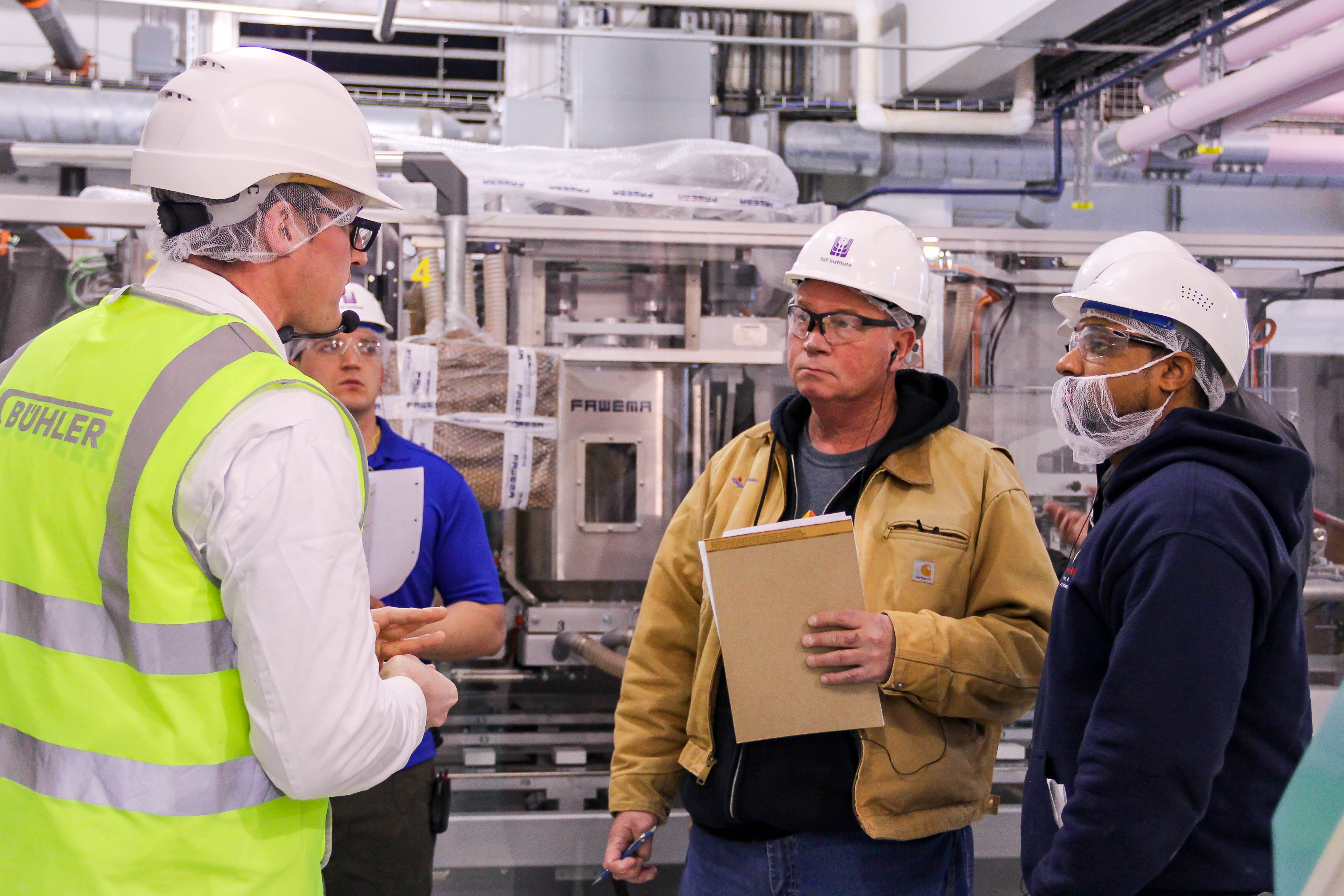MANHATTAN, KANSAS, U.S. – Kansas State University’s (KSU) IGP Institute partnered with Bühler to educate 11 industry professionals on how the milling process works.
The collaboration included two courses, the Bühler-KSU Executive Milling and the Bühler-KSU Flowsheet technology.
The Bühler-KSU Executive Milling held from Nov. 4–8 is designed for mill owners, managers and directors who do not have practical milling backgrounds. Participants gain the skills to understand the challenges that their operations staff may encounter, as well as giving an overall view of the milling process.
“This course gave a high-level view of the milling systems and how they work together to produce a high quality and food safe product,” said Jason Watt, Bühler instructor of milling.
The course covered a multitude of topics within milling systems such as raw material, system design, finished product handling and storage, factors influencing investment decisions as well as many more.

The Bühler–KSU Flowsheet Technology course held Nov. 11–15 was geared toward experienced milling professionals wanting to have additional knowledge in advanced approaches for successful milling operations.
“We discussed technology advancements, as well as new approaches to the process that will increase participant’s yield, operational reliability and product quality,” Watt said.
Participants of both courses utilized the application of hands-on learning in conjunction with classroom lectures through the Hal Ross Flour Mill.
Phillip Murphy, a participant in the course and a technology team member at Bay State Milling, said the hands-on practicum helps with his understanding of the content taught in the course.
“What I really loved about it is that there is a mill on site,” Murphy said. “Having the practical hands-on side as well as the theoretical side you learn ‘This is how it’s supposed to work, now let’s go do it.’ Letting us do hands-on tweaking in the mill and doing lab measurements has been extremely helpful.”





